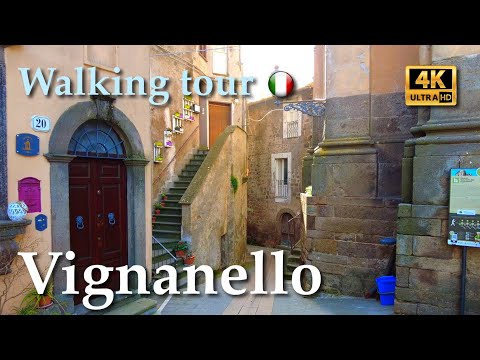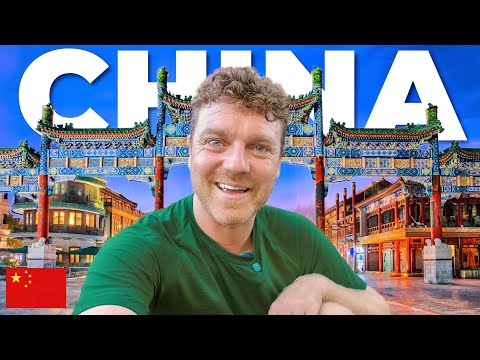Vignanello, Italy【Walking Tour】With Captions - 4K

[Brief intro] [Walking tour begins] 1/8 *Brief History of the town*☀️ The oldest remains are found in a human settlement dating back to the Upper Paleolithic and Mesolithic (90,000 - 30,000 years ago), where Homo Sapiens Sapiens easily found shelter in the tufaceous caves of natural formation present throughout the town. 2/8 In the first 20 years of the 20th century, archaeological excavations were carried out by the Superintendency of Antiquities, which led to the identification of an appreciable Faliscan center (VIII - VII century BC). 3/8 There was an industrious urban complex with an adjoining necropolis, where 16 underground chamber tombs with a square plan were found, as well as some valuable finds, currently kept at the National Etruscan Museum of Villa Giulia in Rome. As evidence of the vast presence of the area in pre-Roman times, the surrounding countryside is also teeming with tombs with similar characteristics. 4/8 There is no certain and clear evidence about the development that the inhabited center had with the advent of the Roman era, however the legend suggests that in 410 AD, in the descent of Alaric I of the Visigoths, the people fleeing took refuge in the harsh and inaccessible territory of the Cimini Hills, entering the thick woods. 5/8 From there a settlment seems to have began, where the community found sustenance in the presence of game and numerous water sources. It is at this time that the origin of the name Vignanello could be traced. In fact the greatest exponent of the settlement may have been a man named Giuliano, hence the first appellation of Giulianello, who underwent several evolutions until becoming Uignanello and finally Vignanello (toponym perhaps also inspired by the vineyards cultivated in the 'around). 6/8 The first official mention of the village came in 604 AD. , 'Olivetum in feud Julianelli', as a gift from Pope Gregory the Great in favor of the Vatican Basilica, subsequently the farm passed to the Holy Roman Empire, and then again to the popes who made it a Benedictine possession until 1081-1082. In this period the village had already been transformed into a castrum, that is, into a city center fortified by a wall, of which only a few traces survive.
7/8 In 1169 Federico Barbarossa snatched Vignanello from the Church and included it in the imperial possessions of Viterbo, thus began a tortuous dispute that saw the Aldobrandini, Orsini and Prefects of Vico families as protagonists. The castrum returned to the Church in 1435 and then again in 1534 to Beatrice Farnese, after which, due to parental vicissitudes, the fiefdom became part of the dominion of the Ruspoli-Marescotti princes till today. 8/8 In 1816 Pius VII demanded the abandonment of the government by the princes, so that Vignanello was definitively annexed to the Papal State until its fall, which took place in 1870 with the proclamation of the Kingdom of Italy. [Via Giuseppe Mazzini] [Largo Gramsci] [Church of St. John the Behaded] 1/3 Ruspoli Castle - [*closed due to covid*]☀️ In 1531 Pope Clement VII granted Vignanello as a fief to Beatrice Farnese. The daughter of this, Ottavia, married Sforza Marescotti, and the Farnese Pope Paul III confirmed the fief and elevated it to county. The castle was built around 1574 as the seat for the titular family. In the 17th century the Renaissance style gardens were created by Ottavia Orsini who had married a member of the family.
2/3 The gardens still present today are one of the best examples in Italy of an Italian Renaissance style garden. Inside there is also a labyrinth. The castle preserves on the ground floor a chapel dedicated to Santa Giacinta Marescotti, a member of the Ruspoli family who was canonized by Pope Pius VII in 1807. 3/3 The Ruspoli family, influential in the black nobility of the Holy See, widely used this fief which was implemented thanks to Francesco Maria Marescotti Ruspoli, I Prince of Cerveteri and VI Count of Vignanello. Even today the structure is owned by the Ruspoli family as a private residence, while the rest is open to the public and available for events. [Via di S.Francis]
[Via Piedisole] [Climbing back to Main Square] [Piazza della Repubblica] [...in the middle of narrow streets...]
2021-05-27 02:42


